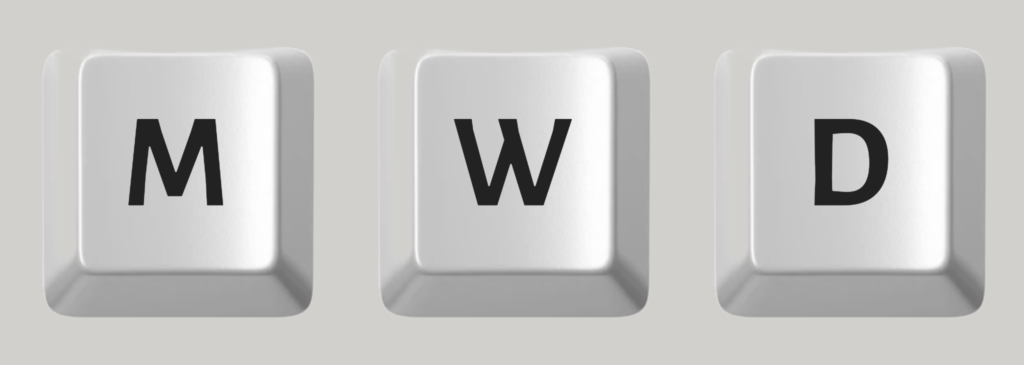Gender-appropriate language
Language influences our thinking and perception. It reflects our ideas and attitudes and has the potential to be discriminatory or inclusive. Gender-inclusive language plays a part in creating a society in which all people are considered and respected equally.

The following article argues for the use of gender-equitable language and discusses various ways of implementing it.
Overview:
- Reasons for gender-inclusive language
- Fair language in science
- Possibilities of implementing gender-appropriate language in words and images
- Neutral formulation of language
- Fair and non-discriminatory language
Reasons for gender-inclusive language
The use of gender-appropriate language is an important step towards reducing discrimination and inequality in our society and formulating facts and social relationships correctly and as accurately as possible. Although the generic masculine claims to refer to everyone, when we talk about “teachers”, “doctors” and “educators”, the image of male practitioners of these professions inevitably arises.
In this respect, gender-appropriate language expands the imaginative space, thus taking into account the diversity of genders and ensuring that all people are addressed equally.
Fair language in science
Gender-equitable language is particularly important in science, as terms and definitions are often coined here, which in turn shape social discourse. This is particularly important in the social sciences, as the aim is sometimes to identify, name and highlight inequalities.
Gender-equitable language in science therefore enables a factually correct and fairer presentation of research results and thus creates an inclusive and respectful atmosphere.
Possibilities of implementing gender-appropriate language in words and images
There are various ways to use gender-neutral language. One option is to use gender-neutral terms such as “student” instead of “student” or “teacher” instead of “teacher”. Neutralizing paraphrases such as “specialist medical staff” instead of “doctor” are also possible. Alternatively or additionally, one of the current contemporary variants of gender-appropriate language can be used: The use of the so-called gender asterisk or colon. These are special characters that have an expanding and therefore inclusive (explicitly co-meaning) effect. While the colon is widely used due to its accessibility and is particularly suitable for referring to both women and men and is not perceived as disturbing the flow of reading, the asterisk also refers to all those who cannot, cannot or do not want to be assigned to either of the two categories and are to be understood as non-binary. It would then either refer to e.g. teachers or teachers.
It becomes more complicated in the context of correct German spelling for words where both forms do not have the same root, such as Arzt and Ärztin, Anwalt and Anwältin. In such cases, changes are recommended, such as “Fachärztliches Personal” or “Rechtsvertretungen”, or the use of both forms when referring to a group consisting of both male and female lawyers.
There are also other special character rules for gender-sensitive language, such as the so-called gender gap, which is indicated by an underscore and, like the asterisk, also includes non-binary persons (“Lehrer_innen”). The internal I (“LehrerInnen”) and the slash (“Lehrer/innen”) are further possible variants to indicate groups that have both male and female members.
If one of the special character rules is chosen for writing a scientific text, it must be adhered to consistently throughout the text.
In spoken language, by the way, in each of these cases a small pause is made between the forms, i.e. at the place where the special character is located: “teacher – pause – inside”.
Aspects of gender equality can also be implemented within the visual language. For example, images and illustrations can be used that take different genders and body representations into account, provided this is relevant and pertinent to the message.
Incidentally, this also applies to written language. In other words, when referring to an exclusively male group, such as “Wehrmacht soldiers”, it is misleading or ahistorical to also mention female members of the group.
At Nomos, we use gender-neutral wording and/or the colon for gender-inclusive spelling wherever possible, e.g. in advertising texts. How the articles, books and journals published by us are formulated in this respect is left to the authors and editors.
Neutral formulation of language
Gender-equitable language can also be achieved by using neutral wording. This means that no gender-specific pronouns or articles are used. For example, the pronoun “it” or “man” can be used instead of “he” or “she”.
Fair and non-discriminatory language
Gender-equitable language should be non-discriminatory and fair. This means that no stereotypical language or (derogatory) terms should be used. For example, it should be avoided that certain professions or activities are described as “typically male” or “typically female”.
Overall, gender-inclusive language helps to create an inclusive and respectful society. There are various ways to implement gender-equitable language, such as the use of gender-neutral terms, gender-equitable formulations and fair, inclusive and non-discriminatory language. Gender-equitable language in science is particularly important in order to enable an accurate, differentiated and fair presentation of research results.